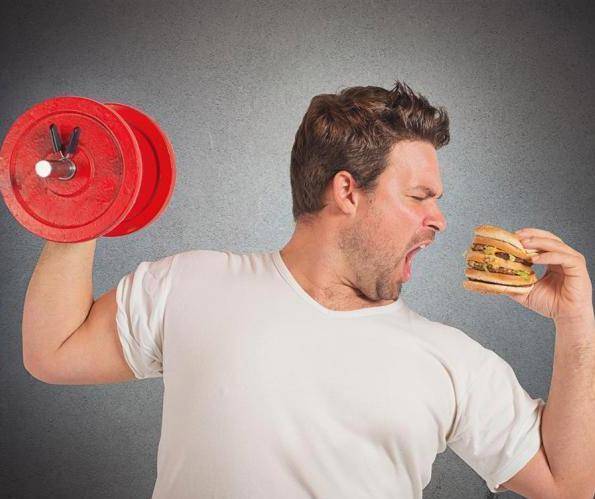#In-Depth Good Article Plan# In the fitness community, there are many “golden rules” that fitness enthusiasts hold as guidelines, among which the most well-known is “to gain muscle, there must be a caloric surplus; to lose fat, there must be a caloric deficit.”
However, are these seemingly undeniable truths really so absolute? Today, let’s discuss this topic.
1. Caloric Deficit and Fat Loss
Indeed, a caloric deficit is the fundamental principle of fat loss, meaning that the calories burned must be greater than the calories consumed, forcing the body to use stored fat as an energy source.
However, this does not mean that as long as there is a caloric deficit, fat loss is guaranteed, nor does it mean that muscle loss will not occur during the fat loss process.
1. Caloric Deficit and Muscle Loss
Research shows that when the caloric deficit is too large, the body will prioritize breaking down muscle for energy to maintain basic physiological functions, as the metabolic rate of muscle is three times that of fat.
Therefore, an excessive caloric deficit can lead to a reduction in muscle mass, negatively affecting body shape and metabolic rate after fat loss.
2. Reasonable Caloric Deficit
Generally, a recommended caloric deficit is between 300-500 calories per day, which ensures effective fat loss while minimizing muscle loss.
2. Caloric Surplus and Muscle Gain
Muscle gain indeed requires a caloric surplus, meaning that the calories consumed must exceed the calories burned,
so as to provide sufficient energy and nutrients for muscle growth.
However, this does not mean that as long as there is a caloric surplus, muscle gain is guaranteed, nor does it mean that fat will not be accumulated during the muscle gain process.
1. Caloric Surplus and Fat Accumulation
When the caloric surplus is too large, the body will convert excess energy into fat storage in addition to energy used for muscle growth. This is why many people notice an increase in their body fat percentage during muscle gain. Thus, a reasonable caloric surplus is key to muscle gain.
2. Reasonable Caloric Surplus
Generally, a recommended caloric surplus is between 200-500 calories per day, which ensures the energy needed for muscle growth while controlling fat accumulation as much as possible.
At the same time, a reasonable training plan and diet structure are also crucial; strength training can stimulate muscle growth, while a high-protein, low-fat diet can provide ample nutrition for muscles while reducing fat accumulation.
3. The Importance of Periodized Training
Whether for fat loss or muscle gain, periodized training is very important. Our bodies have a strong capacity for adaptation; after training with the same program for a period of time, the body will gradually adapt to the stimulus, and training effects will diminish.
Why is periodized training needed: Periodized training helps you continuously provide new stimuli to the body, thus avoiding adaptation. By constantly adjusting your training program, you can keep your body in a state of “non-adaptation” to achieve continuous improvement.
How to implement periodized training: There are many forms of periodized training; for example, you can provide new stimuli by changing the intensity, frequency, duration, or movements of your training. The key is to continually challenge the body with new experiences to make ongoing progress.
Returning to our initial question: “Is a caloric deficit necessary for fat loss and a caloric surplus necessary for muscle gain?” The answer is: not necessarily. Fat loss and muscle gain are not simply achieved through caloric deficits or surpluses, but require a comprehensive consideration of diet, training, and rest.
I hope today’s share has been helpful to you; see you next time!


